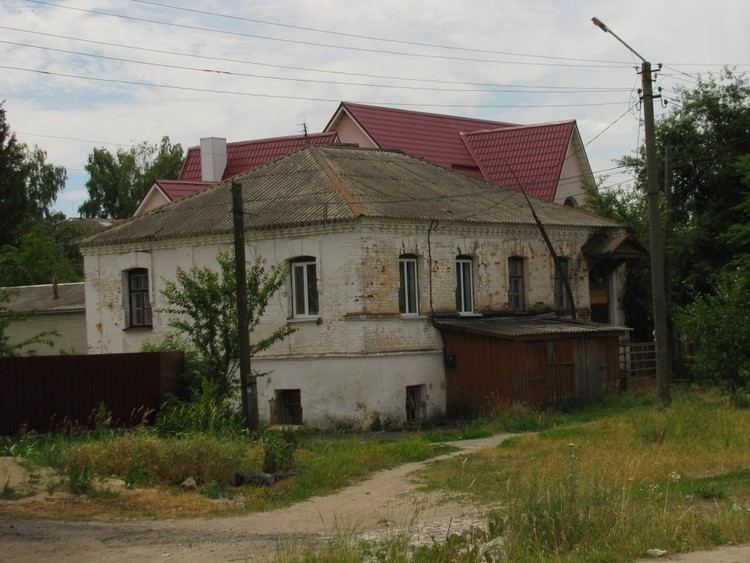Country Ukraine Raion Radomyshl Raion Area 6.5 km² Local time Thursday 7:23 AM | Oblast Zhytomyr First mentioned 1150 Population 14,943 (2013) | |
 | ||
Weather 6°C, Wind N at 13 km/h, 94% Humidity Points of interest Radomysl Castle, Heritage Museum, Muzei flory i fauny | ||
Radomyshl (Ukrainian: Радомишль, translit., Radomyshl’) is a historic city in Zhytomyr Oblast (province) of northern Ukraine. It is the administrative center of Radomyshl Raion (district), and is located on the left bank of Teteriv River, a right tributary of Dnieper River. Population: 14,943 (2013 est.)
Contents
Map of Radomyshl', Zhytomyrska, Ukraine
History
Since 1150, it was known as Mychesk, and renamed under Polish administration to Radomyśl, and after World War II to its current name.
Radomyshyl was historically a centre of Jewish settlement. In the year 1797 a total of 1,424 people or 80% of the total population were Jewish. In 1847 it had increased to 2,734 and it further increased to 7,502 (67%) in 1897. In 1910 Radomyshl had a Talmud-Torah and five Jewish schools. In 1919 during the Russian Civil War a pogrom by militants under ataman Sokolovsky struck the community. Many were massacred and others fled. In 1921 Radomyshl Synagogue was burned down. By 1926 the Jewish population had declined to 4,637 (36% of the total population). In 1939, 2.348 Jews were living in the town which represented 20% of all population.
The Holocaust
During World War II, Radomyshl was occupied by the German Army from July 9, 1941 to November 10, 1943 then again from December 7 to 26, 1943. In August, 1941, the Germans established an open ghetto for the Jews. On August 5 and 6, 1941, 276 Jews were killed in two mass executions. On September 6, 1941, Sonderkommando 4a in collaboration with Ukrainian Auxiliary Police shot 1,107 adults and 561 children in the forest during the ghetto liquidation Aktion. Six mass graves have been discovered in the area. Only 250 Jews remained by 1970.
Nowadays Radomyshl is known primarily for the Museum of Ukrainian home icons located in Radomysl Castle, a private museum founded by Olga Bogomolets, MD.
